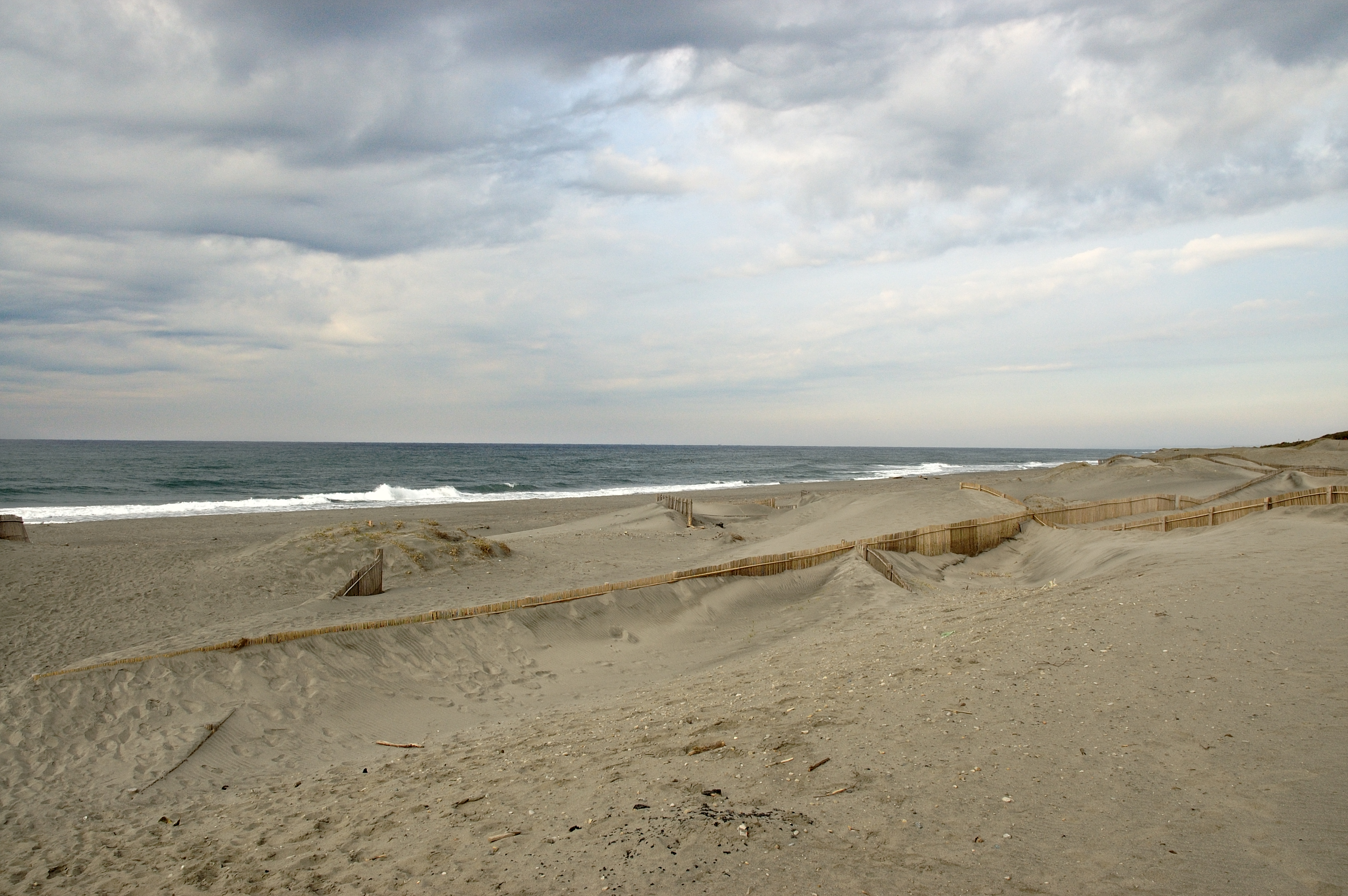Sand fence on:
[Wikipedia]
[Google]
[Amazon]
 A sand fence or sandbreak, similar to a snow fence, is a barrier used to force windblown, drifting
A sand fence or sandbreak, similar to a snow fence, is a barrier used to force windblown, drifting How To Install Snow Sand Fence-Guidelines
/ref>
 A sand fence or sandbreak, similar to a snow fence, is a barrier used to force windblown, drifting
A sand fence or sandbreak, similar to a snow fence, is a barrier used to force windblown, drifting sand
Sand is a granular material composed of finely divided mineral particles. Sand has various compositions but is usually defined by its grain size. Sand grains are smaller than gravel and coarser than silt. Sand can also refer to a textural ...
to accumulate in a desired place. Sand fences are employed to control erosion, help sand dune stabilization, keep sand off roadways, and to recruit new material in desert areas. Sand fences are also commonly employed following storm events in order to aid in the dune recovery process, particularly in developed areas where dunes are critical for protection of property.
A typical construction is to attach a perforated plastic
Plastics are a wide range of synthetic polymers, synthetic or Semisynthesis, semisynthetic materials composed primarily of Polymer, polymers. Their defining characteristic, Plasticity (physics), plasticity, allows them to be Injection moulding ...
sheet to stakes at regular intervals, similar to construction site fencing or temporary sports field fencing. Another is a cedar or other lightweight wood strip and wire fence, also attached to metal stakes. A permanent sand fence is generally of larger wooden poles set deeply into the ground with large wooden planks running horizontally across them.
The drifting and settling of sand behind and in front of such a fence occurs because the wind speed on both the downwind and windward sides is less than that on the far windward side, allowing light materials such as sand to settle. This creates a pile both in front of and behind the sand fence causing more sand to drop out. Conveniently the sand does not drop on the barrier itself, otherwise it would soon be buried and rendered useless./ref>
See also
* Agroforestry * Buffer strip *Desertification
Desertification is a type of gradual land degradation of Soil fertility, fertile land into arid desert due to a combination of natural processes and human activities.
The immediate cause of desertification is the loss of most vegetation. This i ...
* Energy-efficient landscaping
* Groyne
A groyne (in the U.S. groin) is a rigid aquatic structure built perpendicularly from an ocean shore (in coastal engineering) or a river bank, interrupting water flow and limiting the movement of sediment. It is usually made out of wood, concrete ...
* Great Plains Shelterbelt
* Hedgerow
* Macro-engineering
In engineering, macro-engineering (alternatively known as mega engineering) is the implementation of large-scale design projects. It can be seen as a branch of civil engineering or structural engineering applied on a large landmass. In particular ...
* Snow fence
* Windbreak
A windbreak (shelterbelt) is a planting usually made up of one or more rows of trees or shrubs planted in such a manner as to provide shelter from the wind and to protect soil from erosion. They are commonly planted in hedgerows around the ed ...
References
{{reflist Environmental soil science Fences Earthworks (engineering)